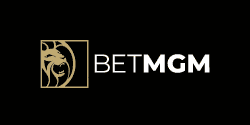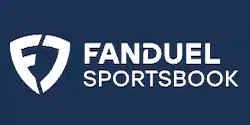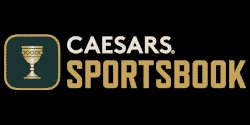There’s no worse feeling in sports betting than writing a handful of tickets and watching them all lose.
Betting cashback bonuses take the sting out of devastating defeats by rewarding players with refunds on their net losses.
What results is a win-win situation for both bettor and sportsbook. The bettor reclaims a portion of their lost deposit, which they can either withdraw or use to make additional wagers. The bookmaker uses cashback bonuses to increase engagement and brand loyalty.
Like most promotions, the quality of a cashback bonus is dictated by its terms and conditions. Read on to learn more about these potentially lucrative kickbacks along with some tips on how to maximize their value.
Sportsbook Cashback Offers



21+ to Play, T&Cs Apply. Gambling Problem? Call 1-800-GAMBLER
Betting Cashback Bonuses Explained
There are two key ingredients in a sports betting cashback bonus. The first is the percentage cashback, and the second is the bonus cap.
A cashback promotion may read something like this: 20% cashback on net losses up to $100.
This means bettors will receive 20% of their cumulative losses back as cash, capped at $100. Let’s say a hard luck bettor has the following outcomes:
- Loses $100 on an NFL spread
- Wins $50 on an NBA moneyline
- Loses $100 on an NHL puck line
The cumulative loss is $150 ($100 – $50 + $100). 20% of that amount is $30, which is the kickback the bettor would receive from the promotion.
For this promotion the maximum cashback amount is $100. At a 20% cashback rate, a bettor would have to lose $500 to receive the max refund.
Those who lose more than $500 will still only receive $100 cashback. If a bettor loses $1,000, their effective cashback rate drops to just 10%. At $2,000, it dips to just 5%.
It’s important to know the eligibility period for a cashback promotion. It may last an hour, a day, or in rare instances, an entire month. Only wins and losses accumulated during this timeframe will count toward a player’s net earnings.
Also, the sportsbook may restrict eligibility to select markets or betting formats. For instance, a promo might read “25% cashback on net losses up to $500 on Wednesday’s NBA games.” Bets made on Thursday’s NBA slate or on NHL games would not qualify.
Some books impose additional constraints on their cashback promotions. Bettors may have to make a minimum deposit, or there might be odds restrictions that prevents bettors from wagering on heavy favorites. Always read the fine print.
Lossback and Betback Bonuses
Cashback bonuses have two close cousins, lossback and betback bonuses. Both variants are identical to cashback bonuses in every way expect how the refund is allocated.
Lossback bonus refunds are awarded as a site credit and cannot be immediately withdrawn. Instead, bettors will first have to fulfill predetermined wagering, or rollover, requirements.
For example, if a $100 bonus has a 5x wagering requirement, bettors will have to write $500 worth of tickets before their bonus converts to cash.
It almost goes without saying that the higher the wagering requirement, the worse the bonus.
Lossback bonuses may also be subject to other prohibitive terms, like expiration dates and odds restrictions.
Betback bonuses take a slightly different angle. Instead of issuing refunds as bonuses, they’re awarded as bonus bets. In this respect, they’re similar to the bonus bet promotions that most online sportsbooks offer as part of their welcome packages. Instead of issuing full refunds, bettors usually only receive a portion of their losses back as a bonus bet.
Due to the nature of bonus bets, betback bonuses are usually the worst option of the three. Bonus bets are prohibitive, often with a requirement that bettors wager the bonus bet all at once. Also, winning wagers made using bonus bets only return profits and not the initial stake.
Like lossback bonuses, betbacks are often subject to expiration dates and odds restrictions.
Cashback Bonus Example: Resorts Sportsbook
One of the most notable cashback bonuses is offered by Resorts Sportsbook. It offers a whopping 5% cashback up to $10,000 on sports wagers, tabulated monthly.
What’s more, VIP hosted players will see their cashback percentage doubled to 10%.
This offer typically runs throughout the entire NFL regular season and must be claimed via a promo code.

Clearly this offer was concocted with high rollers in mind, as a VIP hosted bettor would have to accumulate $100,000 in losses to receive the maximum refund.
However, there’s nothing preventing low rollers from taking advantage too. A $10 parlay bettor that averages monthly losses of $200 will receive $10 back per month. They can either withdraw that money or take a shot at another parlay, all on the house.
For a bet to count toward a bettor’s net earnings, it must settle during the eligible period. This caveat mainly applies to futures wagers, which often don’t settle for several weeks or months.
Cashback is awarded within 72 hours of the end of each calendar month. Beyond that, there are no restrictions. Simply place wagers, and if you’re down at the end of the month, collect.
Since this is a cashback offer, the refund can be withdrawn immediately.
Tips And Tricks for New Bettors
The first thing every bettor should do is identify how the refund is awarded. The hard and fast rule is that cashback bonuses are far more valuable than lossback or betback bonuses. Unfortunately, they’re also less common.
If the refund is awarded as a site credit (lossback), check the wagering requirements. If they’re high (above 5x) then consider looking for a better offer.
Secondly, the percentage cashback is more important than the monetary cap. Let’s compare two offers:
- 50% cashback bonus on net losses up to $100
- 20% cashback bonus on net losses up to $200.
To receive the maximum refund for the first offer, bettors would have to lose $200. In return, they receive $100, for a total net loss of $100.
The second offer may initially appear more attractive, but it’s not. In order to max it out, bettors will have to incur a $1,000 loss. After factoring in the 20% cashback, they’ll still be down $800.
If they instead lost just $500, they’d get a $100 refund. That’s the same amount awarded to bettors who claimed the maximum from the first promotion. Except those bettors only had to lose $200 to receive it.
This brings us to another important point. Never lose more than the amount needed to receive the maximum refund. This amount can easily be calculated by dividing the refund cap by the percentage cashback.
For instance, if the offer is 25% cashback on net losses up to $500, bettors would need to lose $2,000 ($500 / .25) to exhaust the promotion. Any losses above that amount are wasted, as they won’t be refund eligible.
Cashback Bonuses: Optimal Betting Strategy
The optimal betting strategy when cashback bonuses are involved is to embrace volatility. In other words, bet underdogs.
There’s plenty of statistical evidence backing this claim, but the short version is that underdogs have a better chance of losing, which equates to a better chance of generating a refund.
Why would anyone want a better chance of losing? That’s a fair question, best answered through an example.
Consider two wagers, one on a -200 moneyline favorite, and another on a +400 dog. At fair odds, the -200 favorite is expected to win two-thirds of the time. If a bettor wagers $100, they’ll win $50 two-thirds of the time, and lose $100 the other third, for a total expected value of exactly $0.
Of course, in practice they’ll average a small loss, but for illustrative purposes using no-vig lines works just fine.
If the same bettor wagers $100 on a +400 dog, they’re only expected to win 20% of the time. However, when they do win, they’ll profit $400. The other 80% of the time they’ll lose their initial $100 stake. Yet again, the total expected value is $0.
For both initial wagers, the return-on-investment is the same. However, bettors who bet the +400 underdog will score a refund 80% of the time, while those who selected the -200 favorite only generate a refund 33.3% of the time. The total expected value of betting on the +400 dog is higher, making it the more advantageous wager.
None of this is to say bettors should wager on extreme long shots, but when refunds are involved, taking a modest swing for the fences isn’t the worst idea.
The same goes if the refund is awarded as a bonus bet. Since bonus bets don’t return the initial stake, it’s always best to use them on longshots.
Wes Burns co-founded BettingBonuses.com to help bettors clearly understand offers and promotions at legal online sportsbooks and betting sites. Wes has worked in the regulated online betting industry since 2008.
